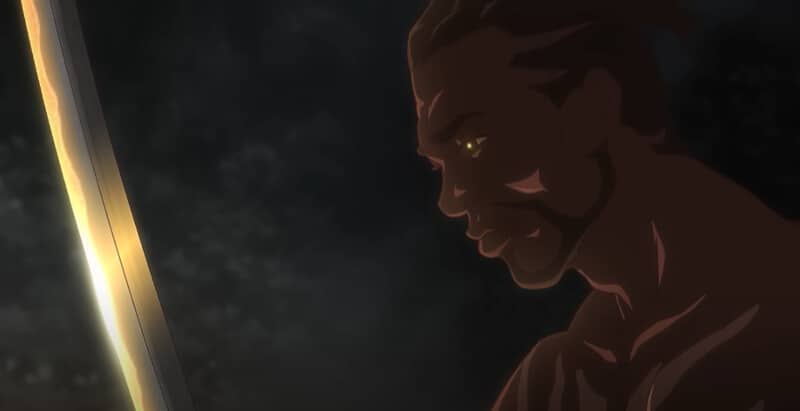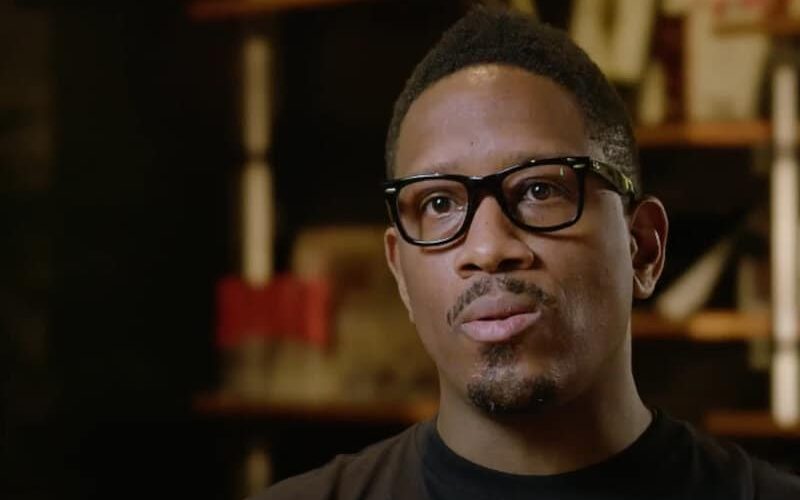Recently, the Japan Society hosted a film series in New York City called “Foreign Exchange: Anime Inspirations and Visionaries of LeSean Thomas.” Ultimately, the films series showcased the animator’s works, as he was honored as the first black anime director in Japan.
Personal History of LeSean Thomas
After screening the short film, Children of Ether, Thomas gave the High School audience a comprehensive overview of his life and career. Born in 1975 in the Bronx, Thomas credited his older brother for introducing him to drawing, a passion that turned into a successful career. Struggling academically, Thomas admits that he was a mischievous child and that his love for drawing kept him out of trouble. Recognizing his talent, his mother supported his passion by enrolling him in a junior enrichment art high school, which helped Thomas channel his energy into a creative outlet.
Initially, LeSean Thomas aspired to be a comic book artist and often collaborated with friends on each other’s comics during school. However, he’d have a hard time getting his foot in the door due to the intense competitiveness of Marvel and DC in the 1990s. Instead, Thomas found his first real opportunity when he became an unpaid intern at the licensing company, Pyramid. Mainly, this company produced handbags for children centered around prominent projects, such as Disney’s Hercules. Notably, Thomas got the position because the company, predominantly graphic designers, loved his comics portfolio as it displayed his illustration skills.
Interests in South Korean Art Styles

Animation work in New York would decline after the dot-com crash, forcing Thomas to move to South Carolina in Greensboro. While there, he had a fateful encounter with Carl Jones, who was friends with The Boondocks creator, Aaron McGruder, leading to his employment as part of the production team. Although Thomas initially focused on character design, McGruder requested that he storyboard a pivotal action sequence personally.
While working in American animation, Thomas was disheartened by the lack of appreciation for South Korean vendor studios. Particularly, he was bothered that the contributions of individual artists were often unrecognized. This concern led Thomas to move to South Korea to continue his animation career and pursue his passions. Although he worked on the iconic The Legend of Korra, the sequel series to The Avatar: The Last Airbender, he received low wages. Still, despite his financial struggles, Thomas wasn’t deterred from his decision.
It also influenced his decision that he’d grown tired of the L.A. lifestyle and wanted something different. Though unorthodox, this career move proved beneficial in the long run. Working with South Korean artists offered connections with Japanese Studios, which pushed him forward in his anime career. When speaking about his directing approach, Thomas emphasized the importance in embracing fear, believing it’s a natural part of innovation. In Thomas’ view, overcoming fear allows one to achieve success.
Lesean Thomas’ Controversial Discussion
Before his public talk involving the production of Yasuke, it was speculated that Thomas’ discussion would spark controversy. This concern is likely due to his responses to fan criticisms of Yasuke and his creative decisions. When Coach Mike asked about the decision to incorporate mecha and other fantastical elements into the historical drama, Thomas addressed the online criticism.
While avoiding social media to keep good blood pressure, he said he’s aware of the hate for his choices, even calling his distractors, self-proclaimed “experts.” In the end, Thomas provided a straightforward response to defend Yasuke’s use of mecha in the anime story. Summed up, he can because he sees no reason not to add them. As it seems, embracing this unconventional approach was his way of staying true to himself and his artistic vision.
Thomas aimed to create an “audacity project” and considers Yasuke to be that – something new and unapologetic. Despite his board having three history advisors to ensure the story is historically accurate, Thomas acknowledged he took certain liberties to create a unique narrative. While not entirely factual, Yasuke was inspired by the real-life story as it introduced the historical figure to mainstream audiences.
Distractors
In the response, he also categorized the show’s creators into two groups: passionate fans and consumers. Specifically, Thomas said the consumers don’t view his work through a creative lens but a consumer one. Regarding the complaints regarding the show’s nonconformity to traditional anime styles, Thomas argues against making comparisons. To be precise, he aspired to tell unique stories, instead of turning Yasuke into the black Samurai Champloo or Vinland Saga.
In fact, he believed inserting black characters into familiar narratives wasn’t enough, so he strived to create something new and innovative instead. Furthermore, Thomas extended his critique to other popular projects, including Jordan Peele’s films, which he viewed as high quality, but unoriginal. Particularly, he argued that Peele’s film, Get Out, relied on familiar tropes and narratives, with the only difference being substitutive Black characters into predominantly white casts.
Response to Black Anime Fans
To black anime fans who hated this decision-making, Thomas responded to their criticism specifically. Without malice, he encouraged and urged his fellow black animators to create their own shows. As everyone’s ideals of what representation should look like are unique, Thomas wanted to see more stories of diverse perspectives. He further states that eliminating this scarcity mindset surrounding representation promoted a culture of creativity.
Specifically, Thomas wanted to see more adult-oriented Black animated dramas, noting the last American example, he could remember, was the HBO Spawn show. Alternatively, he acknowledged that Boondocks was groundbreaking in the adult comedy field, however, he eventually got tired of it. After a while, Thomas became exhausted of its socioeconomic struggles and dark satire, which shifted his focus towards more fantastical and escapist storytelling.
Final Thoughts
Moderated by Coach Mike of the Imagination Project, Thomas participated in three separate conversations as part of the series. Overall, the series catered to three distinct audiences: high schoolers, college students, and the general public.
Moreover, Thomas showed screenings involving five classic anime shows, including Cowboy Bebop: The Movie, Sword of the Stranger, and Ninja Scroll, that influenced his work. Joining Thomas, the Japan Society displayed artwork from Thomas’ animation series, Yasuke, which can be streamed on Netflix. At the same time, the Japan Society offered to sell an exclusive Foreign Exchange art book.








